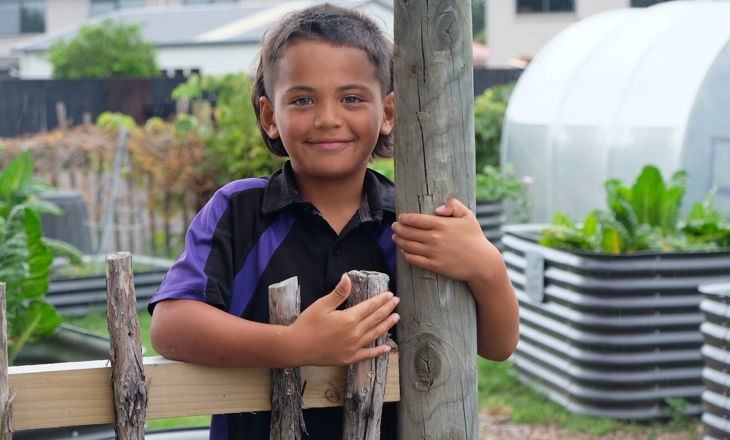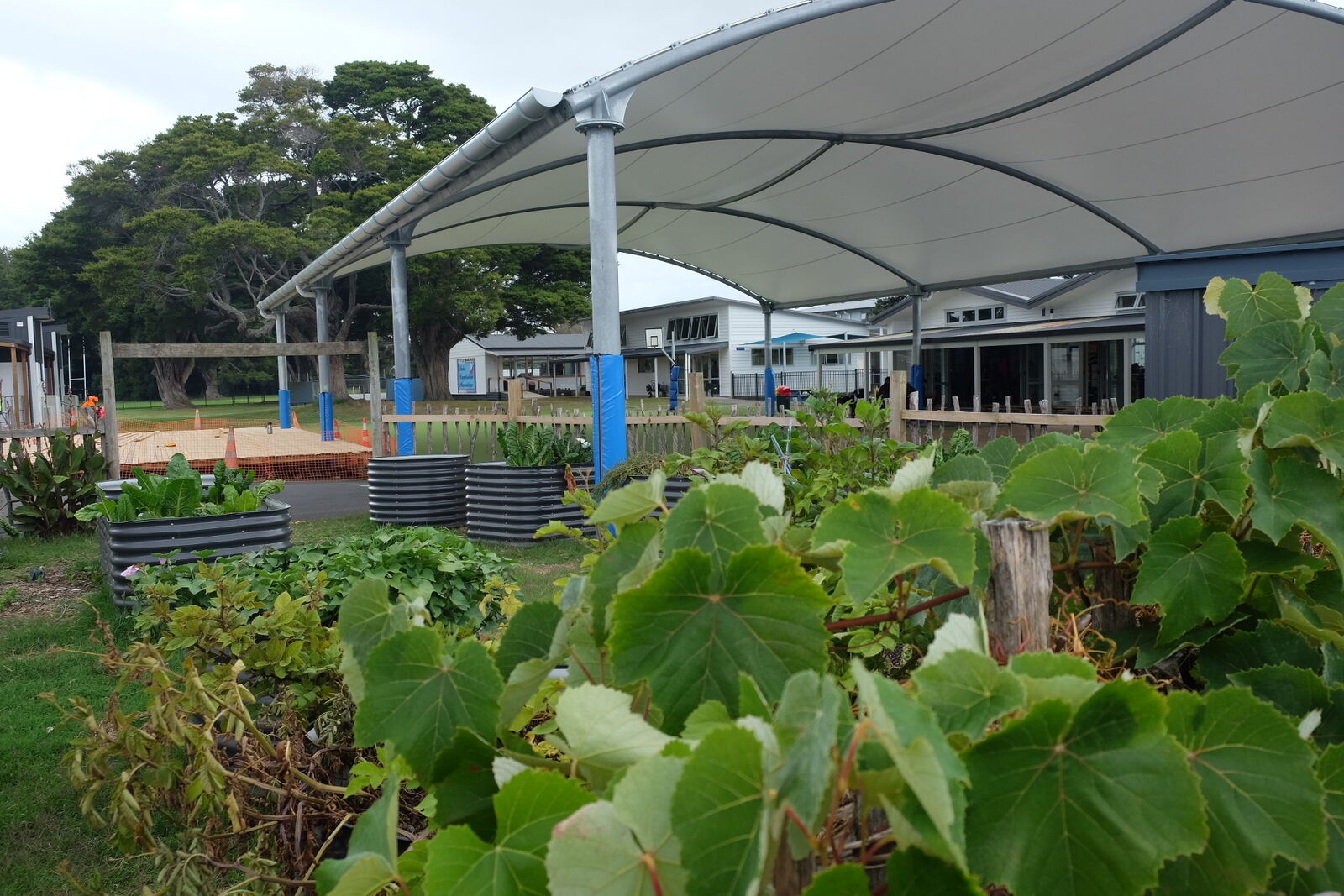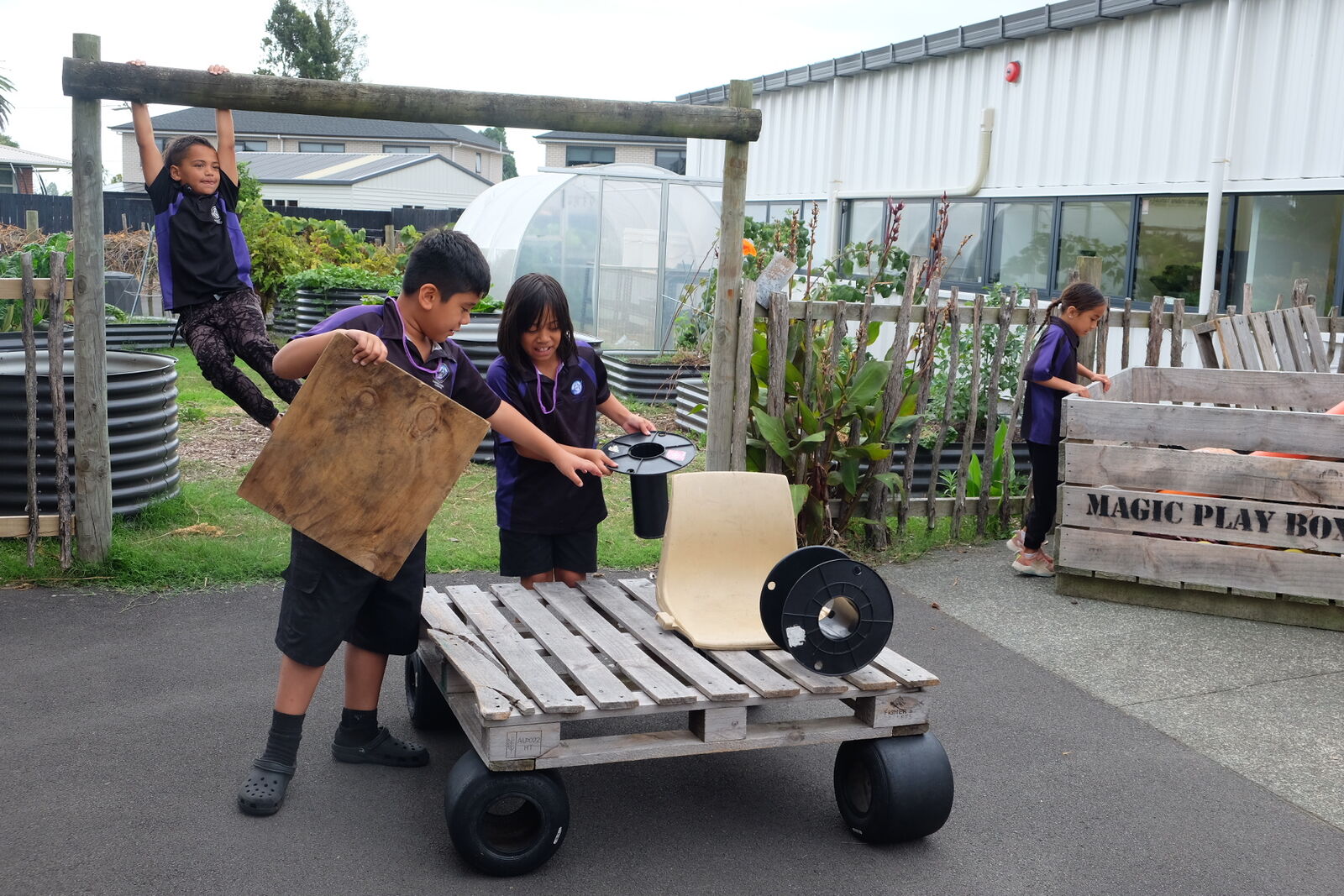Connecting to wellbeing through kai at Kereru Park Campus
Connecting to wellbeing through kai at Kereru Park Campus

At Kereru Park Campus wellbeing is at the heart of everything. Through kai, wai and physical activity, the school has strengthened relationships with whānau to create a culture that reflects and nourishes its community.
“We can’t just expect our kids and whānau to change. We have to do it too,” says Lujoe Johnston, tumuaki of Kereru Park Campus.
Over the past five years, kaiako at the Papakura school have become more mindful about their own behaviour when it comes to kai, wai and physical activity. Through thoughtful policy and curriculum changes, and professional learning and development (PLD), they are intentionally sharing this knowledge with ākonga, who in turn are passing it on to their whānau.
This transformation began with a commitment to Te Whare Tapa Whā. This now underpins the school’s curriculum ensuring that every aspect of learning supports taha tinana (physical health), taha wairua (spiritual health), taha whānau (family health), and taha hinengaro (mental and emotional health).
“Te Whare Tapa Whā now sits across everything we do in our school. It is not just isolated to one curriculum area. Whether that’s literacy, maths, even science – it is connected to everything,” says Lujoe.
The integrated curriculum, which is also aligned with strategic planning and further underpinned by Ngāti Tamaoho’s curriculum document Te Ara Matauranga, was co-designed by staff with the guidance of CLM Healthy Active Learning Advisor Tracey-Lee Dalton. Tracey-Lee also facilitated PLD on using play to teach health and the atua (Māori deities) associated with kai and connected with the Heart Foundation who lead sessions on saving money by making kai at home, and making conscious choices at the supermarket to best fuel your body. Further cost savings have been achieved through the use of gardens as a food source and a new māra kai (food garden) is now pride of place in the centre of the school.
Shared learning
Lujoe says the changes have also increased whānau engagement, which has been “pretty much non-existent” since Covid-19.
A prime example is the 2024 Matariki whānau day, culminating with an inquiry into the maramataka (Māori lunar calendar) and Māori harvesting calendar, focusing on the māra kai. Each class learned about an atua and created something to share, like mussel fritters, kawakawa ointment and rongoā.
“Our whānau really loved it and are expecting to see it annually,” says Lujoe.
Transforming kai and wai culture
A significant part of the school’s wellbeing journey has been reshaping its approach to kai and wai to better reflect its Māori, Pacific, and Asian communities.
When Ka Ora, Ka Ako | Healthy School Lunches was introduced in 2022, many tamariki were unfamiliar with the food provided.
“Our kids, we realised, had no idea what some of the food coming out was. They had never tried it before. Things like chickpeas were not in their staple diet,” Lujoe explains.
Recognising this, the school was further supported by both Tracey-Lee and the Healthy Active Learning team at the National Public Health Service to design a kai and wai policy that was authentic to Kereru Park and celebrated the kai of different cultures. Today taro, supo sui and seafood chowder are staples of shared lunches, helping tamariki feel at home in their school environment.

Creating lasting change
The shift in school culture hasn’t happened overnight, but through deliberate, sustained action. Lujoe credits her staff’s commitment to ensuring the needs of tamariki remain front and centre.
“The change has been a process. It didn’t happen overnight and we had to work hard. It was scary at first, particularly changing policy,” she says.
The school’s play environment has also evolved, supported by Tū Manawa Active Aotearoa funding to purchase new equipment. This has created more opportunities for tamariki to be active, explore and build social connections through movement.
A Healthy Active Learning advisor at the National Public Health Service, Teresa, praises Kereru Park Campus for taking things one step at a time. She commends the school for clearly valuing the importance of kai, wai and physical activity in supporting students’ learning.
“We need food to survive, nourish, and fuel us. Kids learn better, are more alert, and play well when they are well-nourished. The flow-on effects are endless,” says Teresa.
This approach aligns with findings from the Active Bodies, Active Minds report, which highlights that physically active young people engage more in learning, stay in school longer, achieve higher levels of success and enjoy better mental wellbeing.

A model for integrated wellbeing
Throughout the process, Kereru Park Campus has ensured that wellbeing initiatives align with existing school priorities, streamlining learning rather than adding to teachers’ workloads.
“If you said to me, give me one word that describes this journey – it is connections. It’s people connections, its policy connections, and in the centre of all those connections is our tamariki,” says Lujoe.
